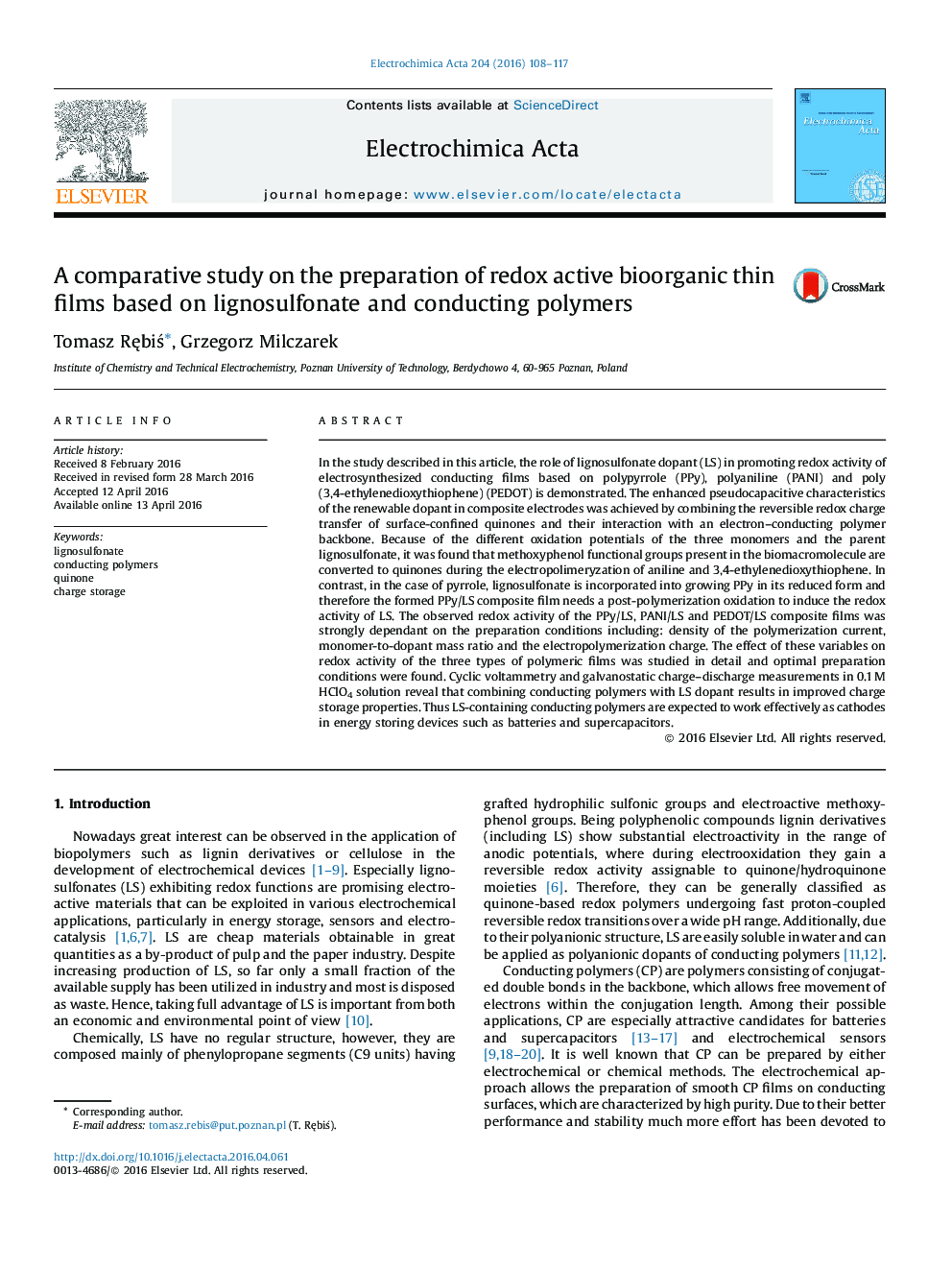| کد مقاله | کد نشریه | سال انتشار | مقاله انگلیسی | نسخه تمام متن |
|---|---|---|---|---|
| 182847 | 459526 | 2016 | 10 صفحه PDF | دانلود رایگان |
In the study described in this article, the role of lignosulfonate dopant (LS) in promoting redox activity of electrosynthesized conducting films based on polypyrrole (PPy), polyaniline (PANI) and poly(3,4-ethylenedioxythiophene) (PEDOT) is demonstrated. The enhanced pseudocapacitive characteristics of the renewable dopant in composite electrodes was achieved by combining the reversible redox charge transfer of surface-confined quinones and their interaction with an electron–conducting polymer backbone. Because of the different oxidation potentials of the three monomers and the parent lignosulfonate, it was found that methoxyphenol functional groups present in the biomacromolecule are converted to quinones during the electropolimeryzation of aniline and 3,4-ethylenedioxythiophene. In contrast, in the case of pyrrole, lignosulfonate is incorporated into growing PPy in its reduced form and therefore the formed PPy/LS composite film needs a post-polymerization oxidation to induce the redox activity of LS. The observed redox activity of the PPy/LS, PANI/LS and PEDOT/LS composite films was strongly dependant on the preparation conditions including: density of the polymerization current, monomer-to-dopant mass ratio and the electropolymerization charge. The effect of these variables on redox activity of the three types of polymeric films was studied in detail and optimal preparation conditions were found. Cyclic voltammetry and galvanostatic charge–discharge measurements in 0.1 M HClO4 solution reveal that combining conducting polymers with LS dopant results in improved charge storage properties. Thus LS-containing conducting polymers are expected to work effectively as cathodes in energy storing devices such as batteries and supercapacitors.
Journal: Electrochimica Acta - Volume 204, 20 June 2016, Pages 108–117
